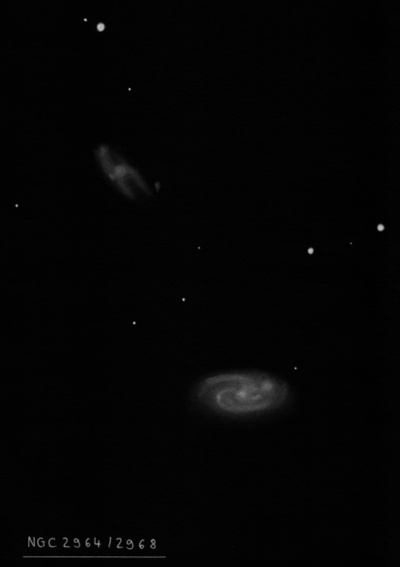
William Herschel discovered NGC 2964 = H I-114 = h622, along with NGC 2968, on 7 Dec 1785 (sweep 487). He recorded, "cB, cL, iF, mbM." John Herschel made 4 observations, logging on 5 Mar 1828 (sweep 127), "B; vL; vglbM; E; 2.5' by 1.5'."
Fourteen observations were made at Birr Castle and interesting structure was noted. On 1 Feb 1856, R.J. Mitchell described "h622 NGC 2968] has nucleus and is mE, its light is very unequal, and I suspect one dark lane running throughout its length south of nucleus; * in preceding edge?" The dark lane probably refers to a dip in brightness between the nucleus and the southern spiral arm.
300/350mm - 13.1" (2/23/85): fairly bright, fairly large, elongated 4:3 E-W, brighter core. Brightest in a group with NGC 2968 5.8' NE and NGC 2970 11' NE.
600/800mm - 24" (2/22/14): at 260x appeared bright, fairly large, oval 5:3 E-W, 1.8'x1.1'. Sharply concentrated with a very bright, very small nucleus. Slightly brighter through the major axis like a bar. Outside the nucleus the surface brightness is irregular, with a slight dip in brightness just north and south of the nucleus [dust or dust lanes]. A brighter arm extends E-W along the south side of the halo and a weak arm runs parallel along the north side. Brightest in a linear trio (KTG 25, a physical group) with NGC 2968 6' NE and NGC 2970 11' NE.
Notes by Steve Gottlieb